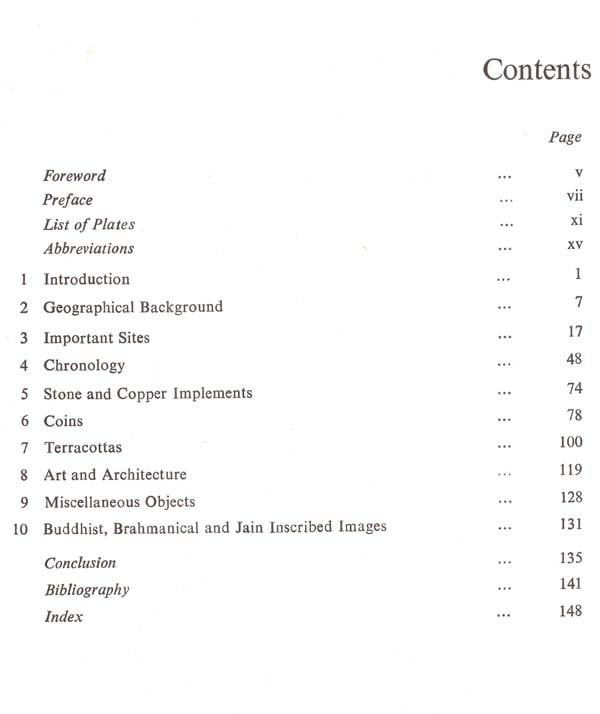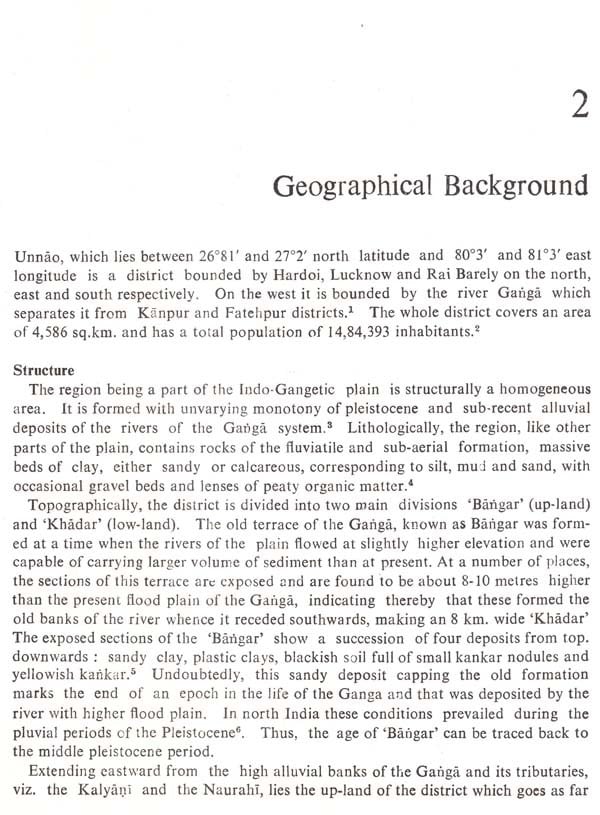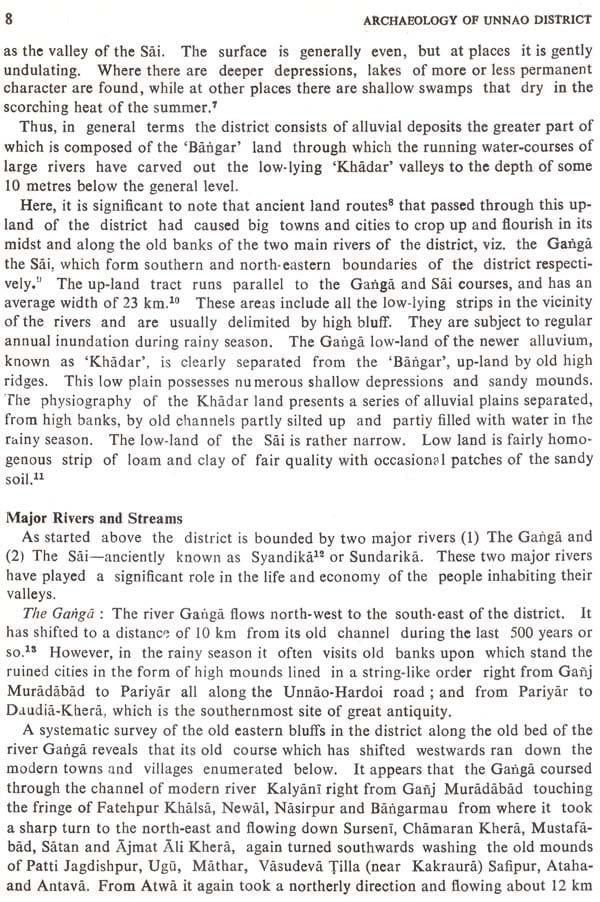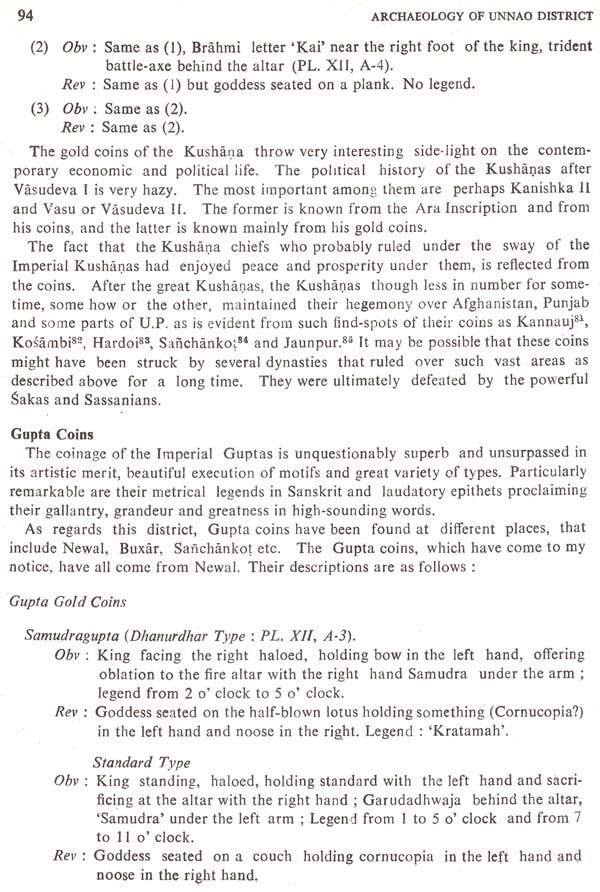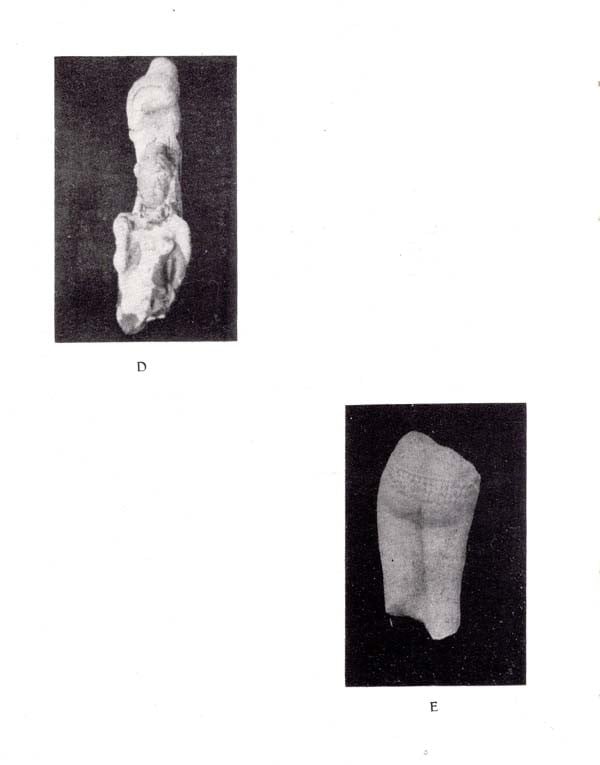About the Book The book entitled 'Archaeology of the Unnao District' deals with the history and archaeology of the mid Gangetic region, which had, so far, remained its unexplored, inspite of great cultural potential. Ganga Valley, believed to be terra incognita from the prehistoric point of view, was the abode of Paleolithic Man who had of the descended to the plains Ganga in quest of game. The Neolithic Revolution had its moorings in the Ganga Valley. The extension of the Harappa culture in the Ganga Valley and the copper hoard culture have been profusely focused in the book. Black-slipped ware, the P.G.W. and the N.B.P.W. have also been studied in their true perspective. A complete drama of human activity from the prehistoric period to the advent of Muslims in India has been restaged with critical commentary. The book highlights the contribution of Unnao district to the mainstream of Indian culture and civilization on the basis of newly discovered tools, artifacts, coins, sculptures, terracotta’s, ceramic ware and many other archaeological importance. objects of archaeological importance.
About the Author Dr. Karuna Shankar Shukla, a winner of a number of gold medals and prizes, is a lecturer in S.1. College, Bangarmau, in Unnao District. He is associated with Indian Archaeologi cal Society, New Delhi, Numismatic Society of India, Varanasi and Environ mental Society, Lucknow. Dr. Shukla has gained a lot of experience in excavation work and has explored more than fifty sites yielding prehistoric, proto-historic and early historic material and antiquities in the Ganga Valley and in the Sai Valley. The present book is the outcome of his depth of knowledge in the field of Archaeology. Besides, he has written three more books.
Foreword I have gone through the work of Dr. KS, Shukis enticed Archaeology of ten Unnão District'. Dr. Shukla has completed his work after the ver of the area. In his explorations he could discover some new material bearing on the pre- and proto-history of the Unnão region. He has stylized this material steady. The original sources of the ancient period, in the form of pottery, when, actions and monuments, have also been incorporated in the work and have boos critically discussed.
Dr. Shukla has successfully, given a brilliant exposition of various problems related to the vast stretch of time, ranging from pre-history to the early historic period. The work deserves early publication. I have no doubt that it will serve as a model for similar other studies in the country.
Preface I have gone through the work of Dr. KS, Shukis enticed Archaeology of ten Unnão District'. Dr. Shukla has completed his work after the ver of the area. In his explorations he could discover some new material bearing on the pre- and proto-history of the Unnão region. He has stylized this material steady. The original sources of the ancient period, in the form of pottery, when, y talons and monuments, have also been incorporated in the work and have boos critically discussed.
Dr. Shukla has successfully, given a brilliant exposition of various problems related to the vast stretch of time, ranging from pre-history to the early historic period. The work deserves early publication. I have no doubt that it will serve as a model for similar other studies in the country.
Introduction India is a vast country. The pale of her ancient culture and civilization is equally very vast and extensive. Therefore, Indian archaeology is faced with a tremendous task of probing and reconstructing her hoary past on the basis of the material available on or under the surface. No doubt, Indian archaeology since Independence has made unprecedented strides in the field of pre-history and proto-history and has played a pivotal role in unfolding our culture and civilization, yet much still remains to be done, for the archaeologists in their bid to prove the long antiquity of man in this sub-continent have concentrated mostly on the marginal and peripheral regions which have yielded prehistoric stone implements and other cultural assemblages. Their work on the prehistory in India 'generally consists of listing sites and the material there from. Little attempt has been made to study from the remains the life of man and the various urges, the circumstances and the forces that conditioned his life and made him to adapt himself and his culture to new situations Nevertheless, the work done by such veteran archaeologists as Dr. Sankalia, B.B. Lal and Prof. K.D. Bajpai cannot but be appreciated. Both Dr. Sankalia and Bajpai have done pioneer work in the Deccan and Central India respectively. Strangely enough, the fertile Gangetic plain that deserves much concerted and coordinated effort in view of its vastness and potentiality has been neglected. Mr. Lal, after excavating Hastinapur, has now undertaken a major project relating to the archaeology of the Ramayana sites which is, however, limited in scope and dimension. Gangetic plain, as such, deserves much more attention; for it has been the cradle of certain races and tribes that have contributed much to the Indian civilization, unparalleled in the whole history of mankind. Pandit Nehru, too, believed Ganga to be 'a symbol of India's age-long culture and civilization".
Surely, if the Indus gave India a name, it may almost be said that the Ganges gave India a faith, and is at least as worthy as her sister of our solicitude" But that faith was not merely the philosophical exuberance consequent of a happy-go-lucky life of a semi-nomadic people who lived in lush green fields, fertile plains and verdant woods.
**Contents and Sample Pages**

